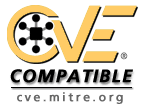Executive Summary
| Informations | |||
|---|---|---|---|
| Name | CVE-2025-1270 | First vendor Publication | 2025-02-13 |
| Vendor | Cve | Last vendor Modification | 2025-02-13 |
Security-Database Scoring CVSS v3
| Cvss vector : N/A | |||
|---|---|---|---|
| Overall CVSS Score | NA | ||
| Base Score | NA | Environmental Score | NA |
| impact SubScore | NA | Temporal Score | NA |
| Exploitabality Sub Score | NA | ||
| Calculate full CVSS 3.0 Vectors scores | |||
Security-Database Scoring CVSS v2
| Cvss vector : | |||
|---|---|---|---|
| Cvss Base Score | N/A | Attack Range | N/A |
| Cvss Impact Score | N/A | Attack Complexity | N/A |
| Cvss Expoit Score | N/A | Authentication | N/A |
| Calculate full CVSS 2.0 Vectors scores | |||
Detail
| Insecure direct object reference (IDOR) vulnerability in Anapi Group's h6web, allows an authenticated attacker to access other users' information by making a POST request and modifying the “pkrelated� parameter in the “/h6web/ha_datos_hermano.php� endpoint to refer to another user. In addition, the first request could also allow the attacker to impersonate other users. As a result, all requests made after exploitation of the IDOR vulnerability will be executed with the privileges of the impersonated user. |
Original Source
| Url : http://cve.mitre.org/cgi-bin/cvename.cgi?name=CVE-2025-1270 |
CWE : Common Weakness Enumeration
| % | Id | Name |
|---|---|---|
| 100 % | CWE-639 | Access Control Bypass Through User-Controlled Key |
Sources (Detail)
| Source | Url |
|---|
Alert History
| Date | Informations |
|---|---|
| 2025-02-13 17:20:30 |
|






